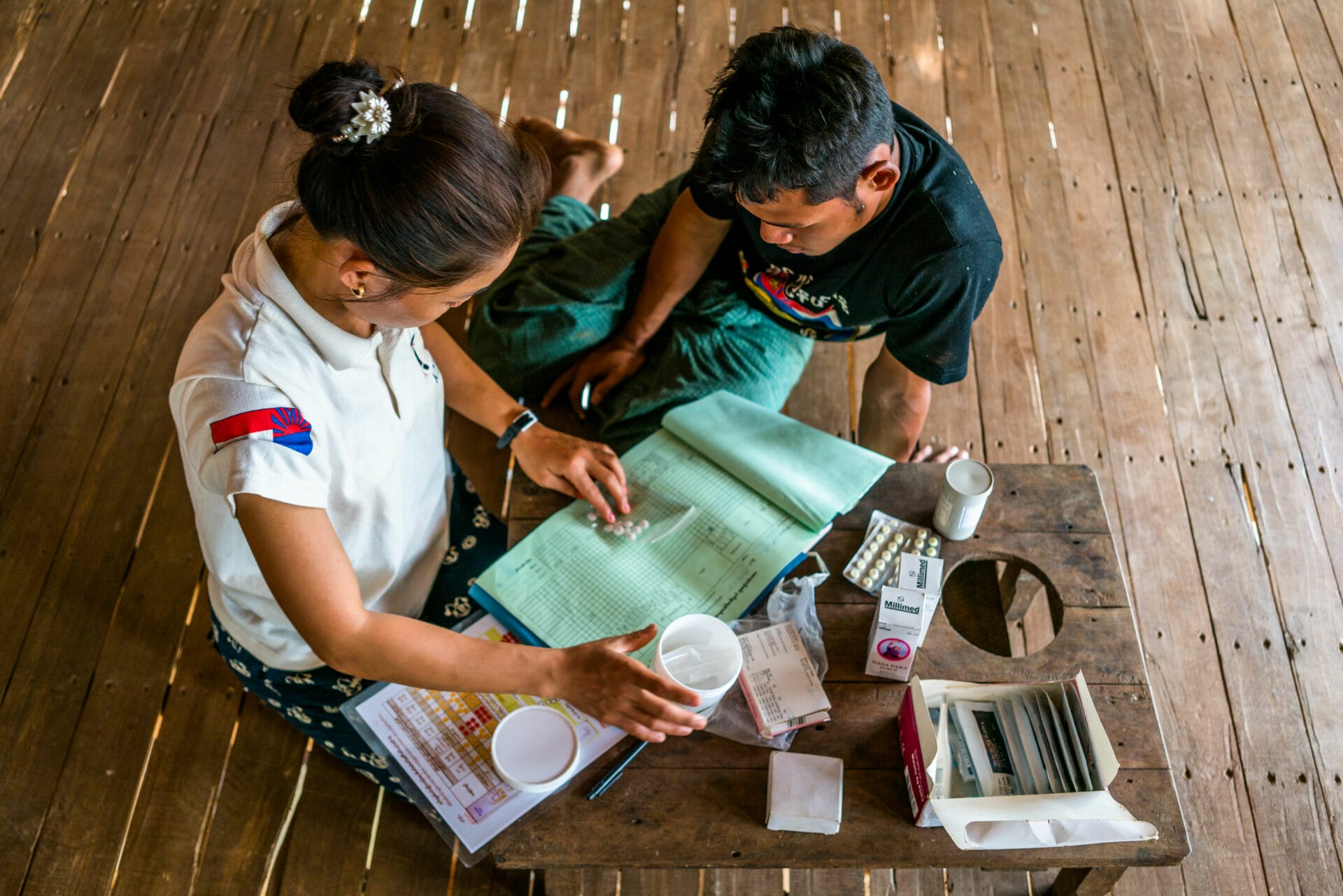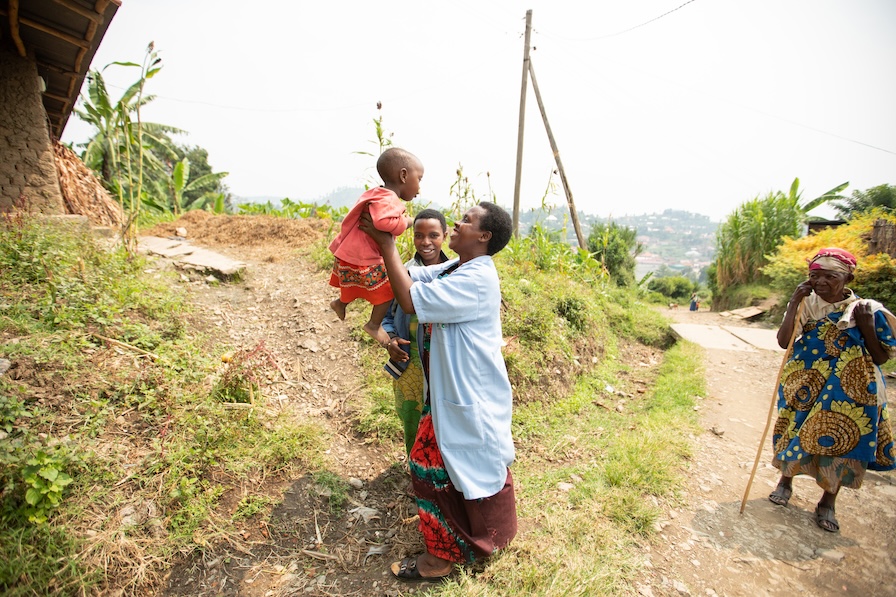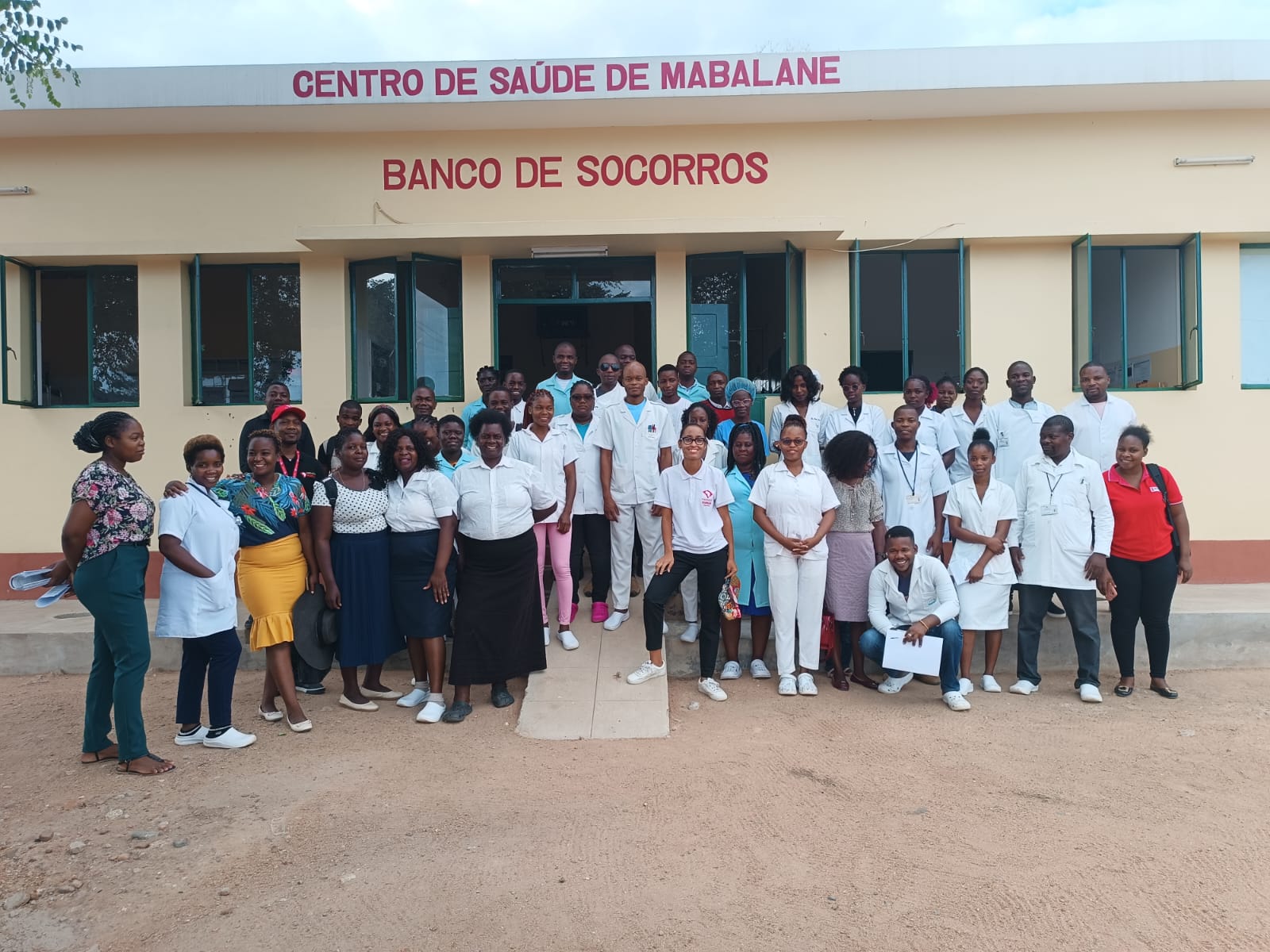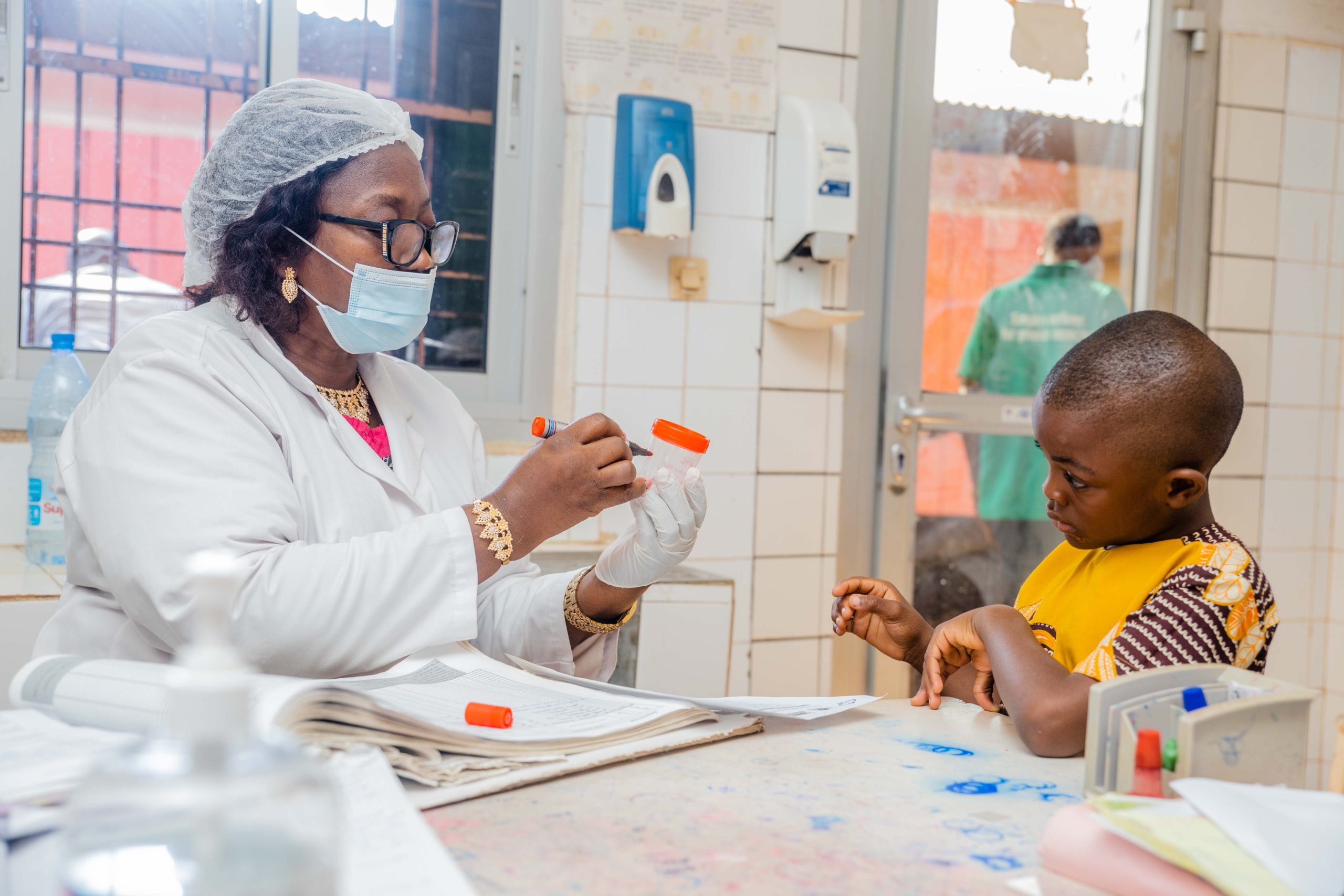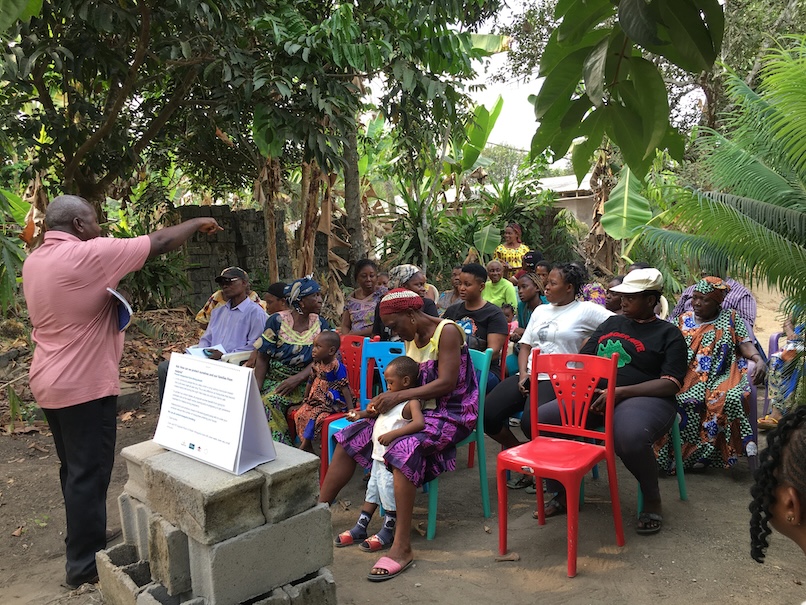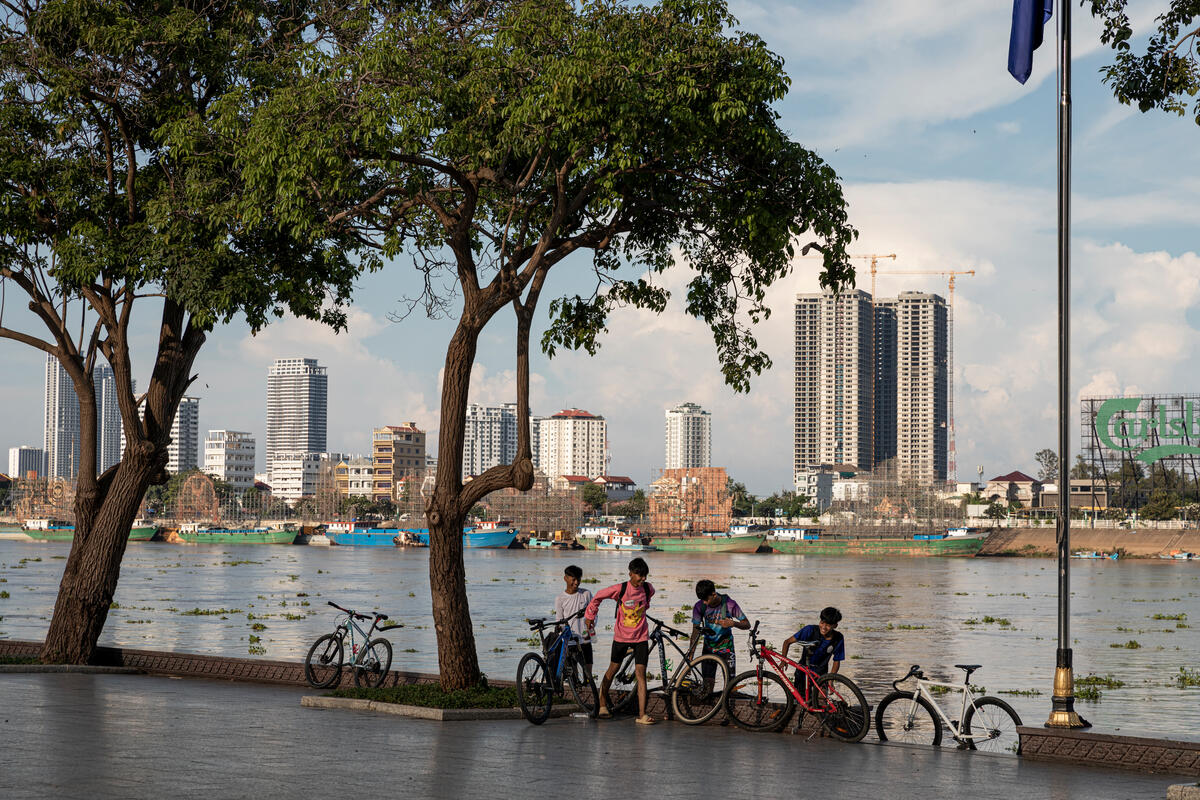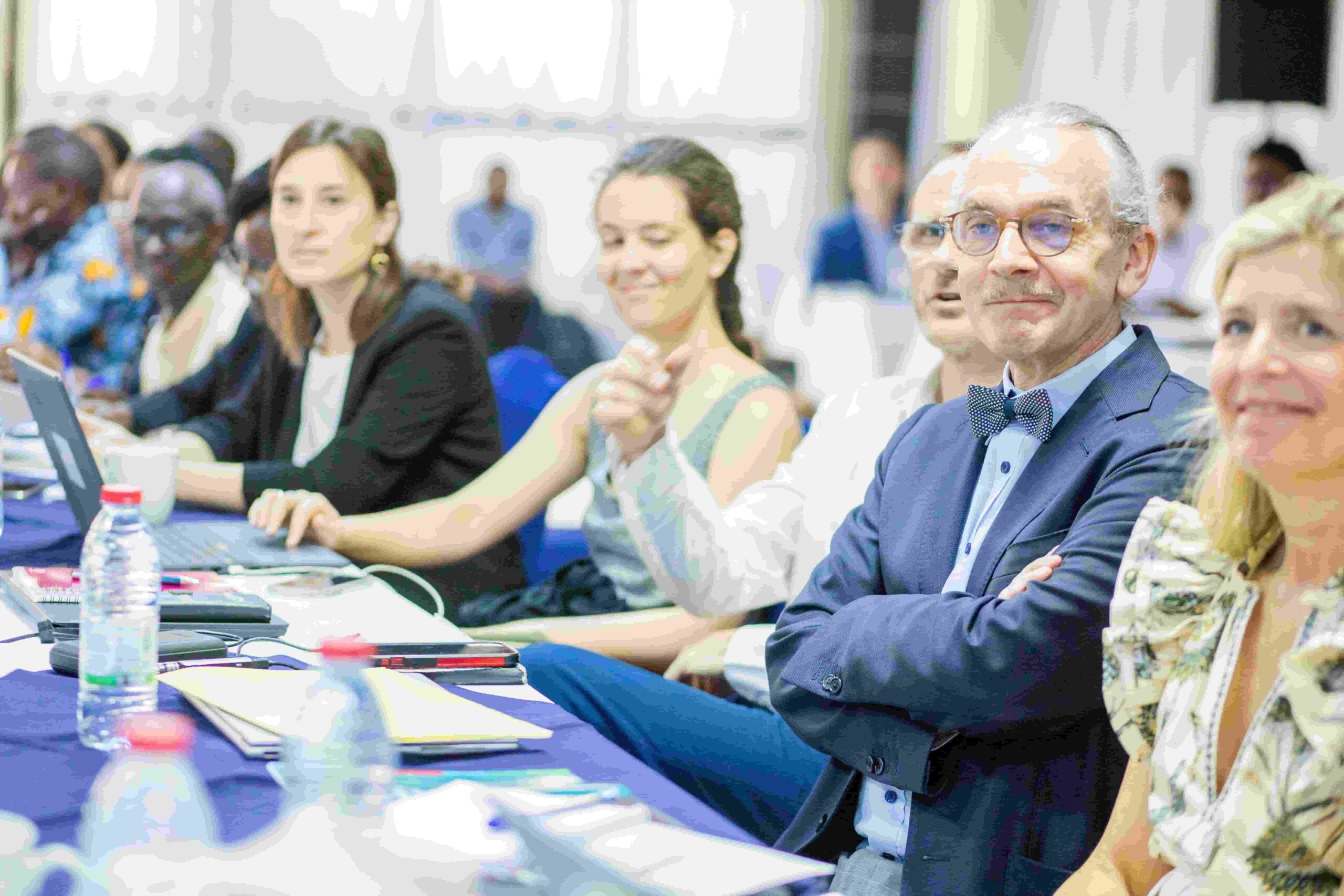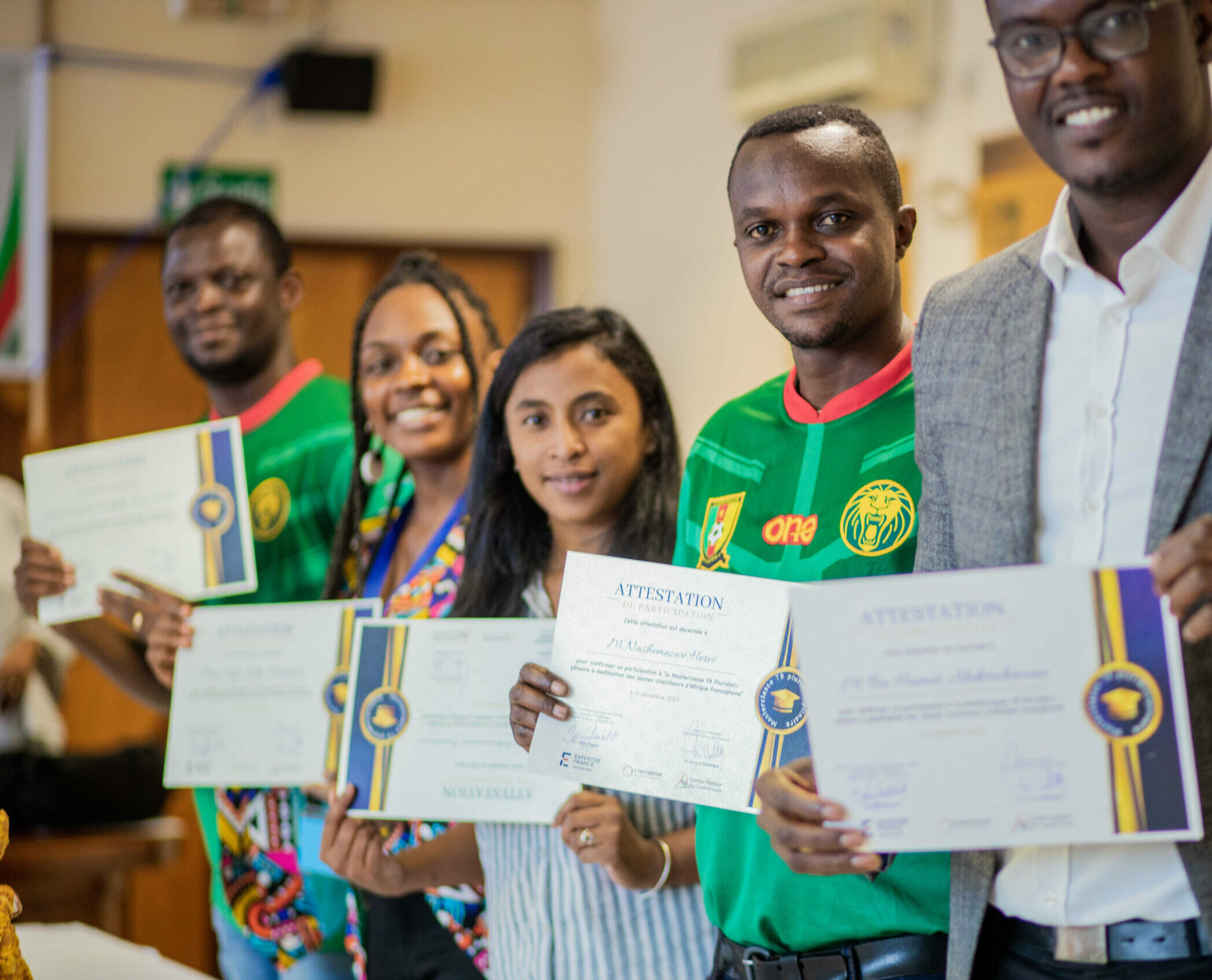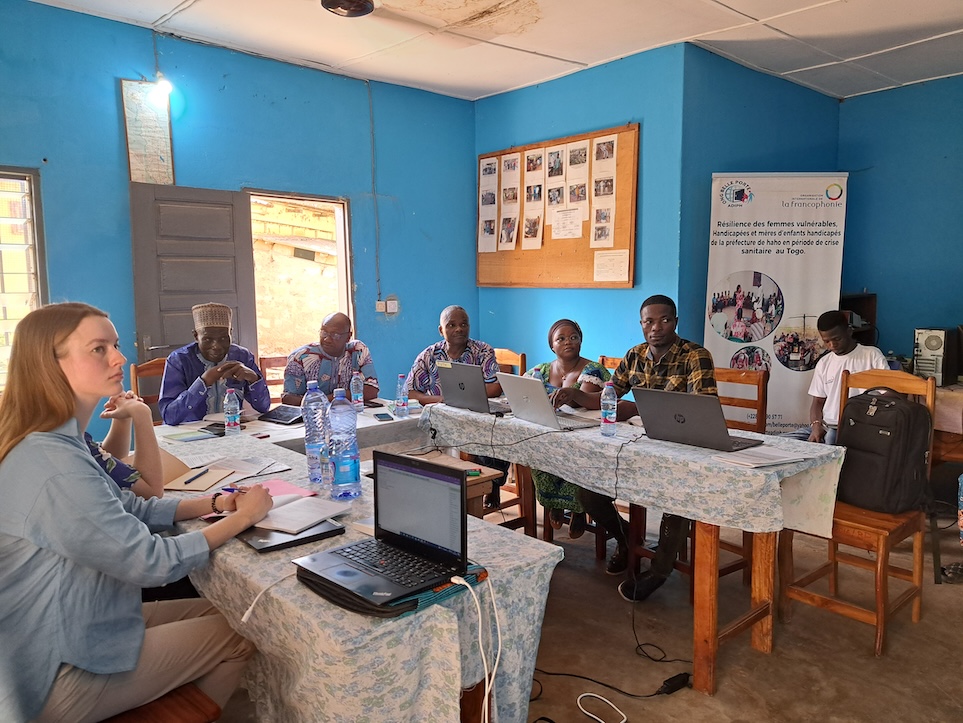The 4×4 strategy : to quadruple the number of trained health professionals in four years in Rwanda
Despite commendable efforts made in the past 30 years to improve access to healthcare, Rwanda still faces a significant shortage of healthcare professionals, limiting the goal of reaching universal healthcare coverage. To tackle this challenge, the country launched the 4×4 reform in July 2023, aiming to quadruple the number of trained health professionals in four years and also improve the quality of health education. Dr. Menelas Nkeshimana currently serves as the Head of the Health Workforce Development Department at Rwanda’s Ministry of Health and is in charge of its deployment. He explains the objectives of the 4×4 reform and how L’Initiative supports it.
Can you tell us more about the Rwandan context that led to the development of this 4×4 strategy?
It starts with the density of the health workforce that we have. In Rwanda, we have one skilled health professional – pharmacists, nurses, midwifery staff, and medical doctors – per 1,000 population, when you need about four according to the WHO standards. This means each and every provider is doing a job that is supposed to be done by four people.
This shortage creates a cascade of challenges: When you have very few staff working clinically, you cannot teach because you’re very busy with clinical work. You see health professionals tending to be concentrated in the cities, and areas that aren’t being served properly. The population has to travel long distances to seek services that should be delivered locally. Hence, the 4×4 initiative is aiming to address the density issues by quadrupling the workforce, maximising trainee enrolment, and supporting the development of additional health training programmes, based on the population health needs.
But the 4×4 reform isn’t just about producing health workforce – it’s about retaining them where you want them to be. By equipping hospitals with modernized equipment and expanded infrastructure, we’re creating non-monetary incentives. When the hospital is well built, the equipment works, you live near the hospital, have easy transport, and facilities for things like breastfeeding mothers – all this transforms the working environment. All this transformation is going to play heavily on the retention. We believe the deployment is now going to be much easier, much more equitable, across Rwanda and beyond.
What are the early success but also the ongoing challenges of the 4×4 strategy?
The strategy is already showing promising results: When we assessed ourselves last December, we had increased enrollment by 3.7 times compared to the historical enrollment rates. By the end of 2025, we expect to have gone even further to occupy the maximum training slots, but also to ensure that enabling structures are in place – the faculty, infrastructures and the equipment, as they all go hand in hand.
However, key challenges remain: There is a lot we want to do, but of course, it requires a bigger financing envelope. Resource mobilization is thus a constant effort. Finding specialized faculty is another challenge, particularly for specialized areas in medical programs, and also specialized cadres for midwifery and nursing. When specialized faculty cannot be found in Rwanda, foreign faculty will be hired. For foreign faculty, we are interested in faculty who commit significant time – about six months minimum – so they can familiarize with the workplace and ensure proper knowledge transfer.
We cannot trade quantity for quality – we need both. Quality is ensured through proper faculty-student ratios and modern teaching methods. The lack of faculty is a challenge, but this is also an opportunity to optimize faculty utilization through digital platforms, allowing synchronized lectures across training institutes. The 4×4 reform also emphasizes standardization: All programs should have one unique national harmonized curriculum, so faculty can deliver content in a synchronized way. So far, the midwifery curriculum has been harmonized through UNFPA support. With L’Initiative, we shall tackle the nursing curriculum.
How are your partners such as us, L’Initiative and the French Agency for Development contributing to the 4×4 reform?
The strategy benefits from strong partnerships, including L’Initiative, Expertise France, and the French Agency for Development (AFD). For instance, L’Initiative has contributed across the board. One of the very memorable contributions was to INES Ruhengeri. The school was struggling with curriculum content and faculty availability for its new health programmes. The technical assistance provided contributed greatly to having their ideas well-packaged and approved by the Higher Education Council. Later on, L’Initiative allocated a EUR 5M grant to the 4×4 strategy’s implementation, financing scholarships, teaching equipment, nursing curriculum harmonization, as well as local and visiting (foreign) faculty support.
Last but not least, the AFD is also contributing significantly to various domains, notably infrastructure development at the Ruhengeri Level II teaching hospital. These concerted efforts ensure that success can be attained quickly with good partnerships.Implementation is carefully coordinated: we are intentional about synergizing with different stakeholders to avoid duplication. Varied partners commit to different components – some might focus on equipment, others on infrastructure. We put everything on the table and have a framework of self-assessment to evaluate our progression as we go.
Once you’ve produced more and better quality human resources in health, what next?
The vision extends beyond Rwanda’s borders: We receive patients from Burundi, Congo, Uganda, and western Tanzania. Rwanda is an open country with visa-free travel. Most people who would normally travel beyond this continent for health services are starting to consider coming here first.
This regional perspective is integral to the strategy: All of this is going to benefit in a way that is transnational. It’s a continental agenda. We believe our trainees will be at international standards, boosting their confidence that they’ve made the right investment of their time. They know they can be employed anywhere, but we believe they’ll choose Rwanda first, and Rwanda will also be there for the region.
Listen to the testimonies of students, teacher and dean of INES-Ruhengeri Institute about the what improvements could be made with L’Initiative support :
How will the 4×4 reform be achieved? – Towards Quadrupling the current workforce in 4 years (4×4); Uplifting Quantity and Quality of care
1. Increase the quantity and quality of trained health professional students in priority programs
The Ministry of Health (MOH) has a target of enrolling a significant number of health professionals in higher learning institutions in areas of highest priority, including but not limited to medical specialization, nuclear medicine, midwifery, anesthesiology, radiology & imaging technology, dental therapy, ophthalmology, and biomedical laboratory. These areas have the largest gaps in enrollment and are a critical workforce required to address the existing burden of diseases in Rwanda. Specialty programs in oncology, cardiology, nephrology, and neonatology are also prioritized for doctors and nurses.
2. Recapture local faculty and hire visiting faculty to fill immediate teaching needs
In view of the limited number of qualified faculty both in public and private institutions, the MOH and partners will support the recruitment and hiring of faculty for medical schools, nursing & midwifery schools, and teaching hospitals. One key activity will be to redeploy local health professionals from public and private health facilities to attributed teaching roles at teaching hospitals and training sites. For outstanding needs, foreign faculty will also be hired to fill current immediate gaps as more local faculty are trained.
3. Improve training capacity and teaching facility sites
Aligned with the previous outcomes, the 4×4 reform emphasizes the need to improve the infrastructure of existing facilities and expand their capacity to accommodate additional students, staff, and programs. The MOH and partners will facilitate medical schools to expand training facilities and infrastructure development according to set quality standards. Ten level two teaching hospitals are being upgraded, equipped, and staffed to serve as training sites while also uplifting care to patients.
4. Coordination of the 4×4 reform implementation
Critical to ensuring the successful implementation of the 4×4 reform will be to ensure strong coordination and monitoring to optimize desired outcomes and to measure the impact of the reform. The Health Workforce Development department at the MOH will lead the day-to-day coordination of all participating institutions and ensure quality medical education provision. The recently developed Health Education Management System (HEMS) seamlessly tracks all programs, allowing the MOH to better plan and allocate key cadres according to the changing burden of disease in the country. Additionally, a steering committee co-chaired by the Minister of Health and the Minister of Education brings together the leaders of all participating teaching institutions, Director Generals of teaching hospitals, and Chairpersons of professional councils, and meets quarterly to assess the progress of the 4×4 reform implementation and provide strategic guidance on challenges. Finally, a forum of development partners supporting the 4×4 reform has also been established for resource mobilization and coordination of implementation efforts.

